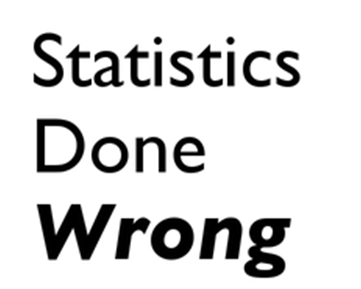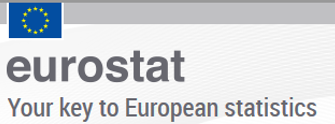179 Reasons You Probably Don’t Need to Panic About Inflation
Posted by Armando Brito Mendes | Filed under Data Science, estatística, relatórios, visualização
relatório dinâmico com gráficos alto \ baixo
By Josh Bivens and Stuart A. ThompsonAug. 18, 2021Gasoline (all types)March 2019March 2020March 2021Used cars and trucksMarch 2019March 2020March 2021Airline faresMarch 2019March 2020March 2021
Here’s how the price of gasoline changed each month throughout 2019, compared with the previous year. ↑ Red means the price went higher, while ↓ blue means it fell.
The coronavirus gripped the United States by March 2020. The economy halted. Gas prices ↓ plummeted.
This year, things have taken another turn. Gasoline prices have increased sharply, ↑ up 41.8% by July compared with a year earlier.
It’s a similar story for used cars and trucks, with prices ↓ falling during the pandemic shutdown, then ↑ soaring as things reopened.
Tags: finanças, gráficos altor\baixo, gráficos variação, inflação
fishdraw
Posted by Armando Brito Mendes | Filed under Data Science, visualização
Estes peixes não existem, são gerado por algoritmos
procedurally generated fish drawings. Lingdong Huang 2021
Tags: desenhos, gerador, peixe
2020 Census Results
Posted by Armando Brito Mendes | Filed under Data Science, data sets, estatística
Fonte de dados do census dos EUA
Decennial Census P.L. 94-171 Redistricting Data Summary Files
Includes the official data, documentation, and support materials to assist in accessing P.L. 94-171 Redistricting Data.
2020 Census Apportionment Results
On August 12, we released the redistricting data to the states and the public. States may use these data in redrawing congressional, legislative, and local district boundaries. The Census Bureau will also deliver the final redistricting data toolkit to all states and the public by September 30. COVID-19-related delays and prioritizing the delivery of these apportionment results delayed our original plan.
More 2020 Census population results will be available later including statistics on age, sex, race and ethnicity, and details about the center of population. The results for the U.S. Island Areas will also be provided in a separate release at a later date.
Tags: census, dados, população
Race and ethnicity across the nation
Posted by Armando Brito Mendes | Filed under Data Science, materiais para profissionais, relatórios, visualização
Bom relatório com mapa de pontos
By John Keefe, Daniel Wolfe and Sergio Hernandez, CNNPublished Aug. 12, 2021
The United States is more diverse and has more people than ever before, with much of the growth occurring in and around metropolitan areas, according to the 2020 census. By plotting the population onto a map of the country according to density and group, it’s possible to get a bird’s-eye view of where we live and how we identify.
Tags: gráfico de pontos, mapa de pontos, mapas
aRtsy: Generative Art with R and ggplot2
Posted by Armando Brito Mendes | Filed under linguagens de programação, materiais ensino, materiais para profissionais, software, visualização
Um pacote para o R para criar arte generativa
“If you laugh at a joke, what difference does it make if subsequently you are told that the joke was created by an algorithm?” – Marcus du Sautoy, The Creative Code
aRtsy is an attempt at making generative art available for the masses in a simple and standardized format. The package provides various algorithms for creating artworks in ggplot2 that incorporate some form of randomness (depending on the set seed). Each type of artwork is implemented in a separate function.
Good luck hunting for some good seed’s! Feel free to post a comment with your best artworks and the corresponding seed in the GitHub discussions.
Contributions to aRtsy are very much appreciated! If you want to add your own type of artwork to the package so that others can also create them, feel free to make a pull request to the GitHub repository. Don’t forget to adjust generate-artwork.R if you also want the artwork to show up in the ‘Artwork of the day’ category and the twitter feed.
Daily Routine, 2020
Posted by Armando Brito Mendes | Filed under Data Science, relatórios, visualização
Bom exemplo de relatório com gráficos de áreas.
By Nathan Yau
After looking at how much time we spent on daily activities in 2020, let’s look at when we spent our time. Based on data from the American Time Use Survey, the chart below shows the percentage of people doing activities on a non-holiday weekday.
European Marine Observation and Data Network (EMODnet)
Posted by Armando Brito Mendes | Filed under Data Science, data sets
Uma boa fonte de dados sobre o oceano
Bathymetry
Data on bathymetry (water depth), coastlines, and geographical location of underwater features: wrecks.
Biology
Data on temporal and spatial distribution of species abundance and biomass from several taxa.
Chemistry
Data on the concentration of nutrients, organic matter, pesticides, heavy metals, radionuclides and antifoulants in water, sediment and biota.
Geology
Data on seabed substrate, sea-floor geology, coastal behaviour, geological events, and minerals.
Human activities
Data on the intensity and spatial extent of human activities at sea.
Physics
Data on salinity, temperature, waves, currents, sea-level, light attenuation, and FerryBoxes.
Seabed habitats
Data, maps and models on the spatial distribution and extent of seabed habitats and communities.
Tags: dados, mar, ocean, oceano
What The New Census Data Shows About Race Depends On How You Look At It
Posted by Armando Brito Mendes | Filed under Data Science, relatórios, visualização
Bom exemplo de relatório com gráficos unitários
Over the past decade, the United States continued to grow more racially and ethnically diverse, according to the results of last year’s national head count that the U.S. Census Bureau released this week.
There are many ways to slice the data and change how the demographic snapshot looks.
Since the 2000 count, participants have been able to check off more than one box when answering the race question on census forms. But breakdowns of the country’s racial and ethnic makeup often don’t reflect a multiracial population that has increased by 276% since the 2010 census. They focus instead on racial groups that are made up of people who marked only one box, with multiracial people sometimes lumped together in a catchall group.
A new way to visualize the surge in Covid-19 cases in the U.S.
Posted by Armando Brito Mendes | Filed under Data Science, relatórios, visualização
Bom relatório com muitos exemplos de gráficos de linhas
The month of July has seen Covid-19 cases in the United States increase at the fastest pace since last winter, marking the start of the latest wave of infections to afflict the nation. A new STAT analysis of Covid-19 case data reveals this new wave is already outpacing the spring and summer waves of 2020.
There are many metrics that governments, scientists, and media outlets have used to try and reckon with the Covid-19 pandemic. One of the most popular ways of visualizing Covid data has been to track the weekly average of new cases. This is pictured below.
Tags: COVID, gráficos de linhas, graphs
How Much the Everyday Changes When You Are in a Pandemic
Posted by Armando Brito Mendes | Filed under Data Science, estatística, relatórios, visualização
Um gráfico inovador para mostrar a evolução entre dois pontos no tempo
A comparison of American time use in 2020 versus 2019By Nathan Yau
Our everyday routines changed over the past year, and with the recent data release from the 2020 American Time Use Survey, we can see by how much.
The survey, published by the Bureau of Labor Statistics, asks participants what they did over a 24-hour period. Usually, the survey is ongoing with results published each year, but in 2020, it was suspended from mid-March to mid-May.
Tags: alteração do modo de vida, COVID, tempo







